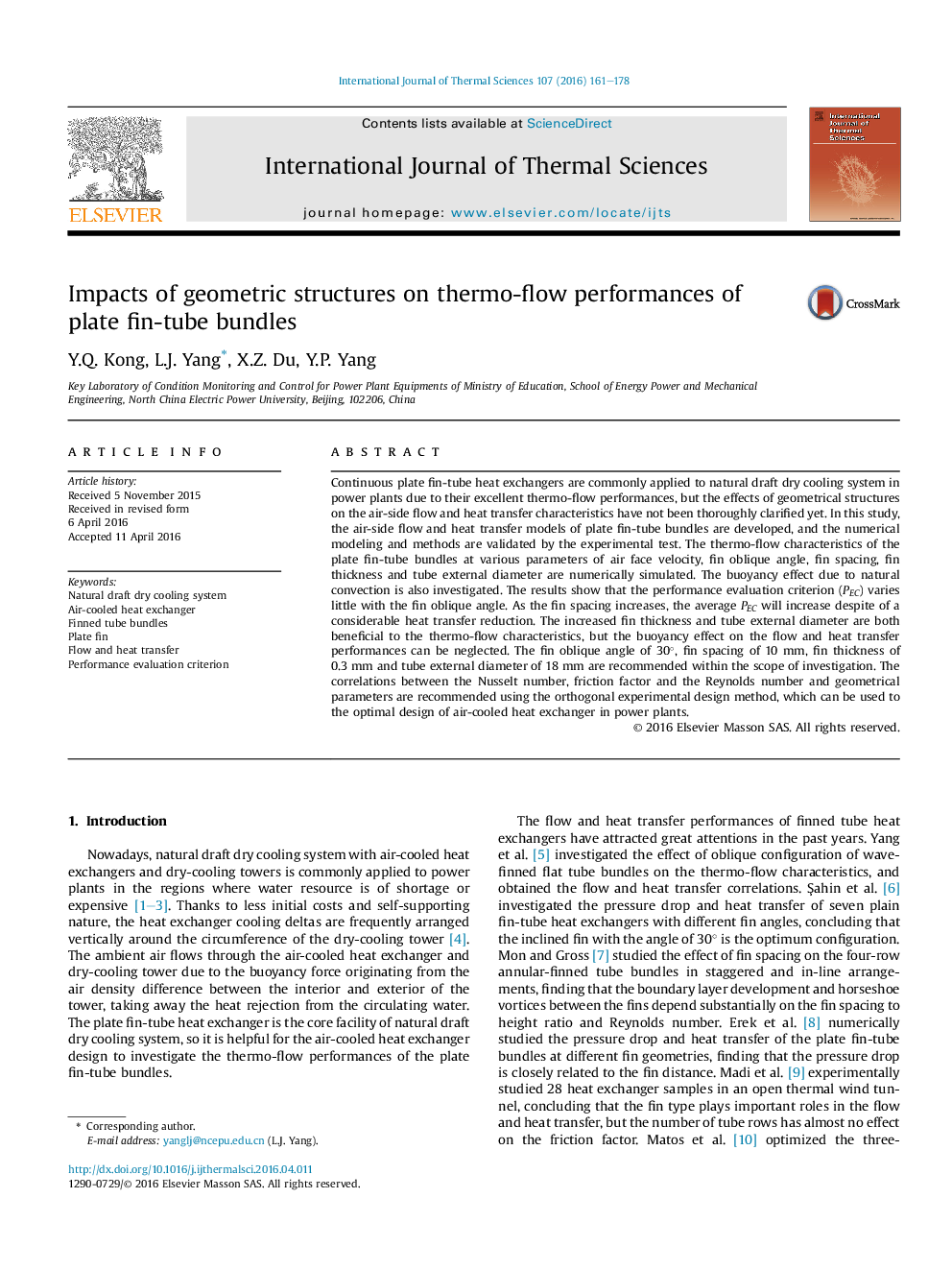| Article ID | Journal | Published Year | Pages | File Type |
|---|---|---|---|---|
| 668421 | International Journal of Thermal Sciences | 2016 | 18 Pages |
Abstract
Continuous plate fin-tube heat exchangers are commonly applied to natural draft dry cooling system in power plants due to their excellent thermo-flow performances, but the effects of geometrical structures on the air-side flow and heat transfer characteristics have not been thoroughly clarified yet. In this study, the air-side flow and heat transfer models of plate fin-tube bundles are developed, and the numerical modeling and methods are validated by the experimental test. The thermo-flow characteristics of the plate fin-tube bundles at various parameters of air face velocity, fin oblique angle, fin spacing, fin thickness and tube external diameter are numerically simulated. The buoyancy effect due to natural convection is also investigated. The results show that the performance evaluation criterion (PEC) varies little with the fin oblique angle. As the fin spacing increases, the average PEC will increase despite of a considerable heat transfer reduction. The increased fin thickness and tube external diameter are both beneficial to the thermo-flow characteristics, but the buoyancy effect on the flow and heat transfer performances can be neglected. The fin oblique angle of 30°, fin spacing of 10 mm, fin thickness of 0.3 mm and tube external diameter of 18 mm are recommended within the scope of investigation. The correlations between the Nusselt number, friction factor and the Reynolds number and geometrical parameters are recommended using the orthogonal experimental design method, which can be used to the optimal design of air-cooled heat exchanger in power plants.
Keywords
Related Topics
Physical Sciences and Engineering
Chemical Engineering
Fluid Flow and Transfer Processes
Authors
Y.Q. Kong, L.J. Yang, X.Z. Du, Y.P. Yang,
